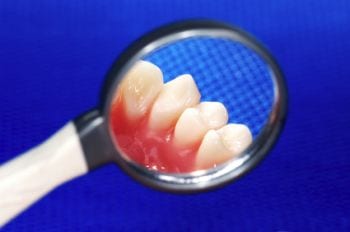
It has been known for decades that having the gum disease periodontitis increases a person’s risk for heart attack (free registration required), stroke and other forms of cardiovascular disease. Research suggests that the link is due to inflammation in the gums causing an immune reaction throughout the entire body. That can increase blood pressure and encourage the accumulation of atherosclerotic plaques in the arteries.
Now researchers have drawn a genetic link between periodontitis and heart disease as well. It turns out that variations in a region of chromosome 9 that have already been associated with heart disease also influence a person’s chances of developing periodontitis.
The specific genetic marker identified by the study is not part of the 23andMe Personal Genome Service. But another marker that has also been linked to heart disease and lies in the same chromosomal neighborhood is described in the Heart Attack research report.
Arne Schäfer of the Institute for Clinical Molecular Biology in Kiel, Germany presented the research in Vienna, Austria, last week at the annual meeting of the European Society of Human Genetics. He and his colleagues found that people with a marker for increased cardiovascular risk in a stretch of DNA known as 9p21 were more likely to have gum disease as well.
The high-risk version of the marker increased a person’s chances of having generalized aggressive periodontitis by 1.99 times, and localized aggressive periodontitis 1.72 times. Aggressive periodontitis generally strikes early in life and progresses rapidly, leading to tooth loss as early as age 20.
The 9p21 region of chromosome 9 contains several genes involved in suppressing the proliferation of cells. In a recent PLoS Genetics paper the researchers suggest that the variation they studied somehow affects the function of one of these genes.
Rather than superceding previous findings linking the effects of periodontal inflammation itself on heart disease, the researchers said, their study provides valuable additional information that could help unravel the connection between the two conditions.



